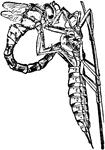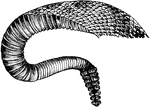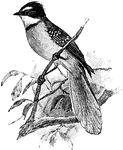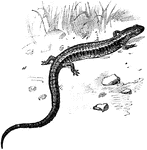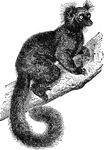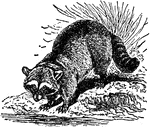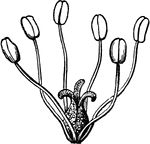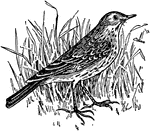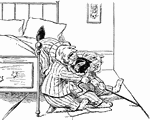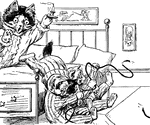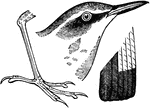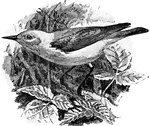
Prothonotary Warbler
A beautiful bird of a rich yellow color, passing by degrees through olivaceous tints on te rump, wings,…
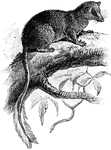
Pentail
A mammal with a long tail furnished with distichous hairs towards the end, like a pen or feather.
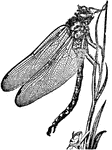
Dragonfly
"The perfect insect (the wings having acquired their full dimensions) resting to dry itself, preparatory…

Genet
"A genus of carnivorous mammals belonging to the Viverridae or family of civets. It contains six species,…
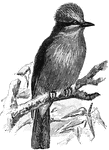
Vermilion Flycatcher
In the males, they have a full globular crest, and the hole under parts flaming red, the back, wings,…
Tail-vice
"The ordinary tail-vice used by mechanics has not yet been largely superseded, though many ingenious…
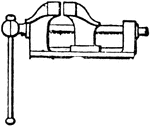
Parallel Vice
"The English parallel vice is little used except for small work." — Encyclopedia Britannica, 1893
Hand-Vice
"Hand-vices are used in the manner implied by their name, without being attached to a bench like the…
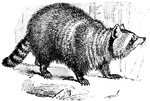
Racoon
An animal about two feet long, stout body, bushy ringed tail, short limbs, pointed ears, broad face,…
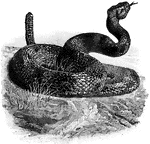
Rattlesnake
A venomous serpent whose tail ends in a rattle. It rattles its tail to warn potential predators to back…
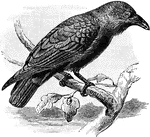
Raven
A bird with black plumage with a metallic sheen, the bill and feet are ebony black, the wings pointed…
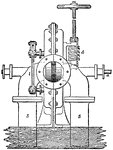
Reaction Turbine
"Professor James Thomson's inward flow or vortex turbine has been selected as the type of reaction turbines.…
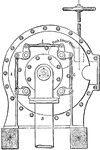
Reaction Turbine
"Professor James Thomson's inward flow or vortex turbine has been selected as the type of reaction turbines.…

Reaction Turbine
"Professor James Thomson's inward flow or vortex turbine has been selected as the type of reaction turbines.…

Reaction Turbine
"Professor James Thomson's inward flow or vortex turbine has been selected as the type of reaction turbines.…

Acipenser
"Heterocercal tail of Acipenser. a, fulcra; b, osseous bucklers." — Encyclopedia Britannica, 1893
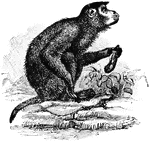
Rhesus Monkey
One of the sacred monkeys of India. It is 18 inches long, the tail 6 or 8 inches, and mostly of a yellowish…
Anchovy
"A small fish, about a span long, much esteemed for its rich and peculiar flavor. It is not much longer…
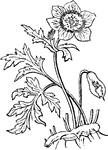
Anemone Coronaria
"A genus of plants of the natural order Ranunculaceae, having an involucre of three divided leaves,…
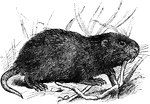
Bamboo Rat
A mole—rat having the eyes open, though very small, ears naked and very short, thumb rudimentary,…
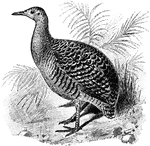
Tinamou
A large bird with varigated plumage, short soft tail feathers, well developed hind toe and long bill.

Ocelot
"A digitigrade carnivorous mammal of the cat kind, peculiar to the American continent. It attains a…
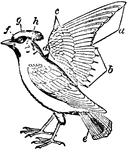
Plumage of Bird
"Plumage of Bird. Bohemian Chatterer (Bombycilla garrula). a, primaries; b, secondaries; c, coverts;…
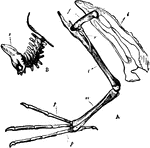
Diver Bones
"A. Pelvis and bones of the leg of the Leon or Diver; i, Innominate bone; f, Thighbone (femur); r, Tibia;…
Coal-gas
"Coal-gas was first used as a lighthouse illuminant at Salvore, near Trieste, in 1817. For many years…

Lophiomys Imhausi
"This very extraordinary species from north-east Africa differs from all other rodents in the peculiar…

Lepus Timidus
"Terrestril Rodents, with imperfect clavicles, elongated hind limbs, short recurved tail, and long ears.…
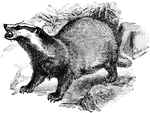
European Badger
About two feet in length of a heavy and clumsy shape, short legs, and short thick tail. Its fur is commonly…
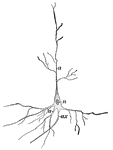
Nerve Cell
Nerve cell from the brain; a, processes by which it communicates with other cells near by;…
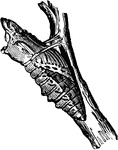
Black Swallowtail Butterfly Larva
This pupa, or chrysalis, is fastened to a little silken pad by the tail, but is also sustained by a…
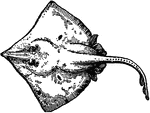
Common Skate
"Skate, a common name for several species of the genus Raia. The members of this genus are characterized…
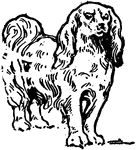
Japanese Spaniel
"The Japanese spaniel, sometimes called the 'sleeve dog', is black and white in color; coat massive…
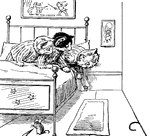
Three Kittens 8
Three kittens hear a mouse and think they see the tail. The mouse is under the bed, but they do not…
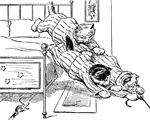
Three Kittens 9
Three kittens chase what they think is a mouse tail while the actual mouse under the bed runs away in…

Bird Parts
"1. Lower mandible. 2. Upper mandible. 3. Forehead. 4. Loral space. 5. Crown of the head. 6. Hind part…
Child Holding A Kite
Illustration of a child holding a kite that can be used to write mathematics story problems involving…

Cat-Tails
Two members of the cat-tail family of grasses. The left: Typha latifolia. The right: Typha angustifolia…

Spermatozoa
"Forms of spermatozoa (not drawn to scale). 1 and 2. Immature and mature spermatozoa of snail; 3. of…
Lugworm
"Arenicola marina. Entire animal viewed slightly from left side. Note anterior mouth; setae on anterior…

Lobster Organs
"Longitudinal section of lobster, showing some of the organs. H., Heart; AO., ophthalmic artery; SA.,…

